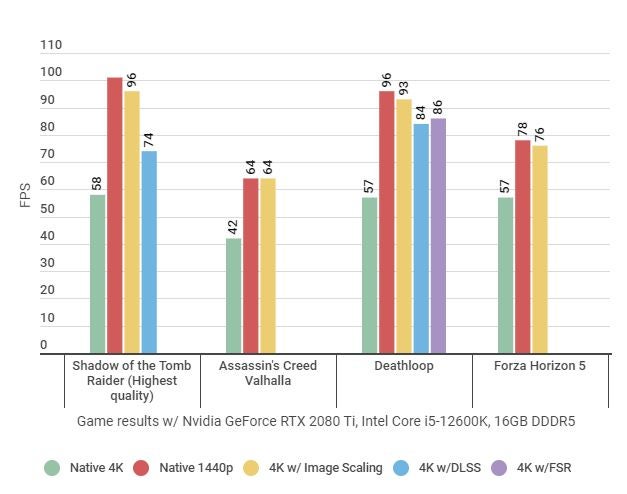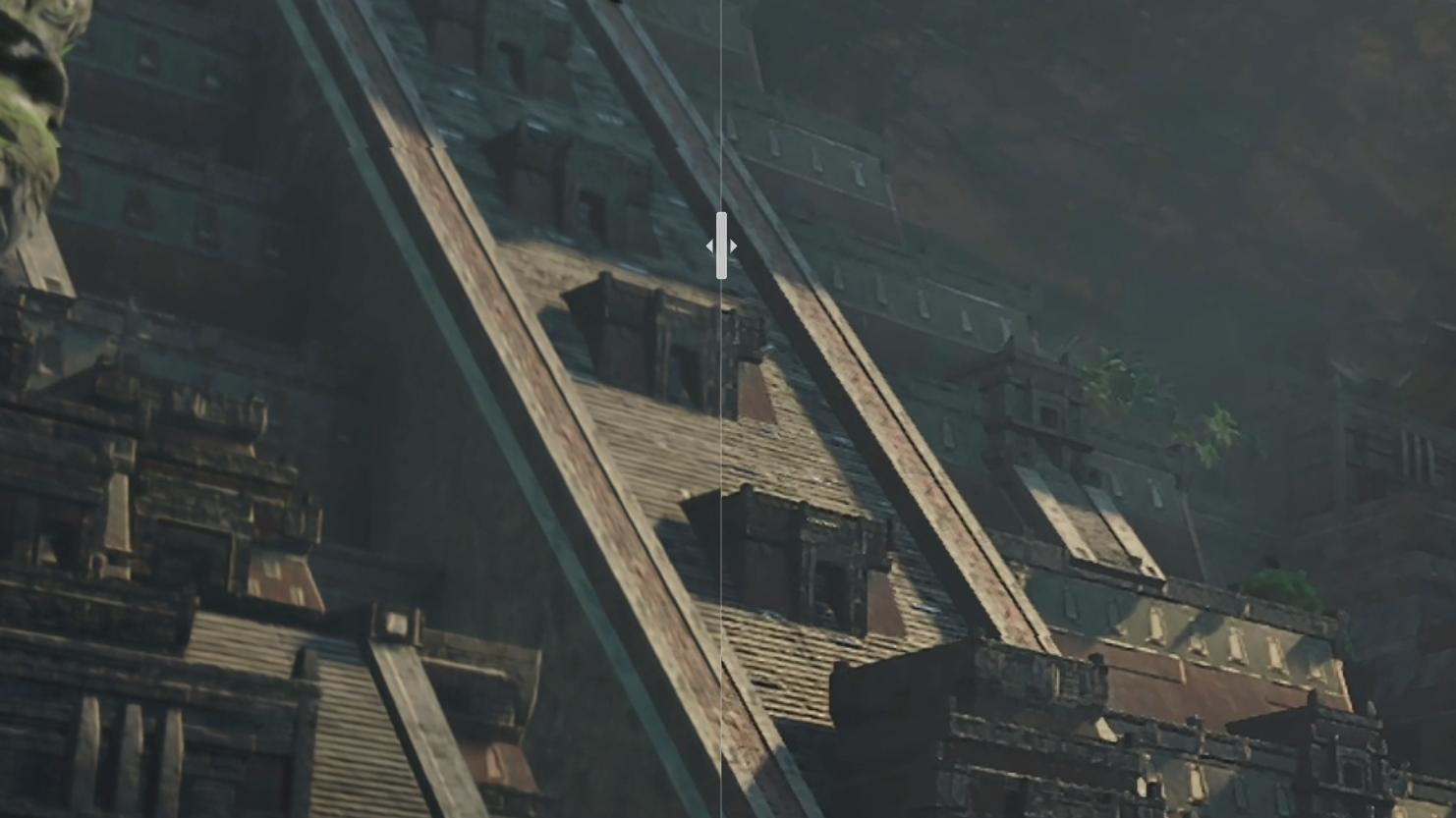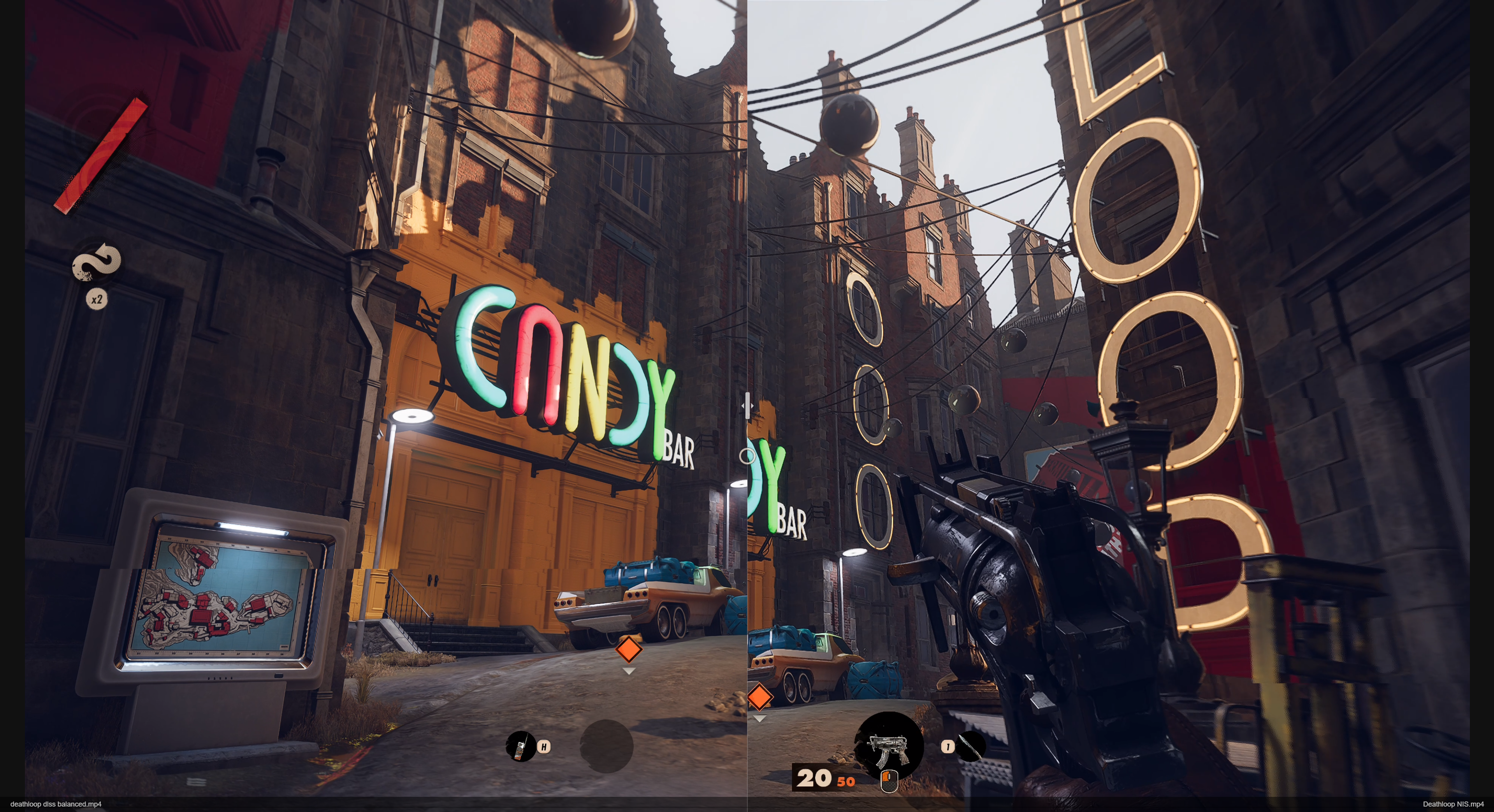Alright, so this new Image Scaling feature – an updated and upgraded take on the Image Scaling tool that’s been nestled within Nvidia Control Panel since 2019 – isn’t quite DLSS Lite, as it lacks any kind of AI/machine learning smarts. With its new upscaling algorithm, though, it is a lot like AMD’s rival FidelityFX Super Resolution (FSR): a spatial upscaler that applies an adjustable sharpening filter in the same pass. It still involves rendering games at a lower-than-native resolution to improve performance, then upscaling the image until it looks more or less like it’s running at native. The biggest adverse differences between Image Scaling an DLSS as that the former doesn’t include its own anti-aliasing, instead upscaling the image using whatever AA was built into the game, and that it doesn’t get smarter about applying its effects over time. However, unlike DLSS – and indeed, FSR – Image Scaling works on any game, not just those the developers have added support for. You don’t even need one of the best graphics cards with all the RTX gubbins – any Nvidia GPU from the Maxwell family onwards (GTX 745 or better, basically) will work. Download the Gamer Ready 496.70 driver (out today), and you can enable it as a global or per-game setting in Nvidia Control Panel. ICAT, or Image Comparison and Analysis Tool, is also free to download from Nvidia. Y’know those sliding screenshot comparison widgets you see on sites with bigger production budgets than RPS? You can now have something just like that on your very own PC. I love it, and heartily recommend installing it if you want to test out different graphics settings yourself, but is Image Scaling also worth using? Let’s find out, with a little help from ICAT. First off, it’s worth noting that Image Scaling is designed specifically to help produce more frames per second at higher resolutions like 1440p and 4K. At 1080p, your native resolution isn’t really putting enough strain on the GPU for any kind of upscaling to be worthwhile. I therefore tested Image Scaling by setting in-game resolutions to 1440p and letting the Nvidia tech automatically upscale the image to my monitor’s native 4K (another difference to DLSS and FSR: those are best used when leaving resolution settings at native res). In every game I tested, I ended getting identical or only very slightly lower performance to when using native 1440p with Image Scaling off – so significantly more frames than using native 4K. The particular settings I was using are apparently close to how FSR works on its second-highest ‘Quality’ setting, but Image Scaling outpaced both that and ‘Balanced’-quality DLSS in Deathloop as well. Essentially, if you want maximum smoothness but aren’t willing to drop resolution, there’s already a good argument in Image Scaling’s favour. In terms of fidelity, Image Scaling also turned out more competitive than I expected, especially in Shadow of the Tomb Raider. DLSS’s built-in anti-aliasing looks better than upscaled TAA, but you can see in the comparison below – snapped in ICAT – that there’s no less visible detail in Lara’s clothing or hair, so textures aren’t getting smushed by the more basic algorithm. There were even some environmental details where Image Scaling’s integrated sharpening (I had this set to 67% at Nvidia’s recommendation, you can change it freely) made it appear even more detailed than DLSS, like on these ancient stairs. Overall sharpness and motion handling remain better on DLSS, but given its strength lies in its ability to maintain fine details through the upscaling process, you’d think it would beat Image Scaling more comprehensively. Image Scaling also stood up well to native 4K in Assassin’s Creed Valhalla. Not better, but close enough that I’d gladly take an extra 22fps for it. It’s certainly a lot closer to native 4K than how the game looks at 1440p, which remember, is the resolution it was actually rendering at before upscaling At this point it’s safe to say that if the game you’re playing supports neither DLSS nor FSR, Nvidia Image Scaling is at least worth trying out. But what if it supports both? In Deathloop, DLSS proved the upscaling tech to beat – besides smoothing out jagged edges more effectively than Image Scaling, it demonstrated a drawback of the latter’s reliance on a sharpening filter. While this can help deal with the blurriness that arises from spatial upscaling, sharpening can also make object edges look overly dark, or give surfaces an odd grainy look. In Deathloop, the effect isn’t ruinous, but certain details do look more naturalistic with DLSS. This Balanced DLSS as well, so the difference would be even starker when using the superior ‘Quality’ setting. Against FSR, Image Scaling has more of a fair fight, though I personally slightly prefer AMD’s tech here. Again, Image Scaling seems to have an anti-aliasing disadvantage, and while some very distant details are easier to make out with Image Scaling, the extra jaggies are a considerably trade-off. Ultimately, I reckon that if you have an RTX 20 series graphics card or newer, you’re best off sticking with DLSS whenever it’s available. You can actually have both DLSS and Image Scaling’s sharpening component active at the same time, though I tried this in Deathloop and wasn’t a fan of the added filter; with some exceptions, like those Tomb Raider stairs, DLSS is sharp enough as it is. I don’t think this is going to kill off FSR either, though it will provide AMD’s upscaler with some healthy competition (at least for Nvidia card owners; for AMD Radeon fans, FSR remains the only option). If the sharpening filter looks too strong, you can always tone it down as well – there are sliders both in Nvidia Control Panel and in GeForce Experience. I should also note the one and only technical hiccup I encountered while testing Image Scaling. The optional ‘NIS’ overlay, which can sit in the screen corner in-game and is colour-coded to show whether upscaling or just the sharpening filter is in effect, didn’t appear in Forza Horizon 5. The effects themselves worked, I just didn’t get the overlay to confirm. Don’t be afraid of trying it out, mind. A game-agnostic upscaler was an admirably ambitious idea in 2019, and with this update to Image Scaling, Nvidia has produced something broadly as good as FSR – and definitely as capable of boosting your frame rate in a pinch. Update: our guide on how to use Nvidia Image Scaling will walk you through setting it up!





